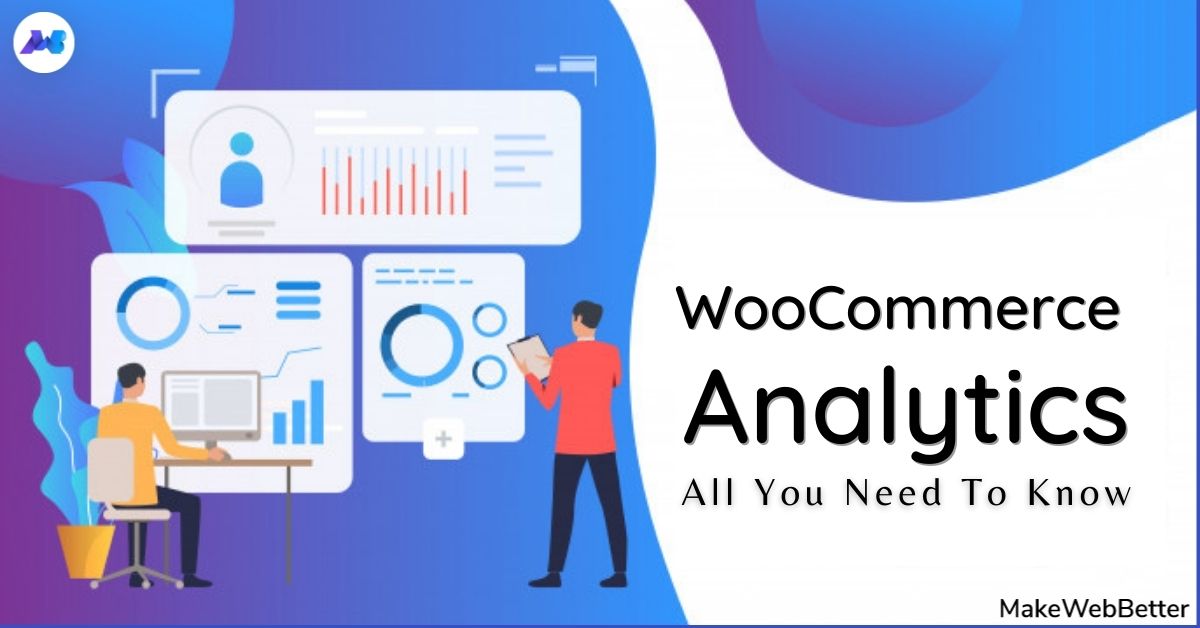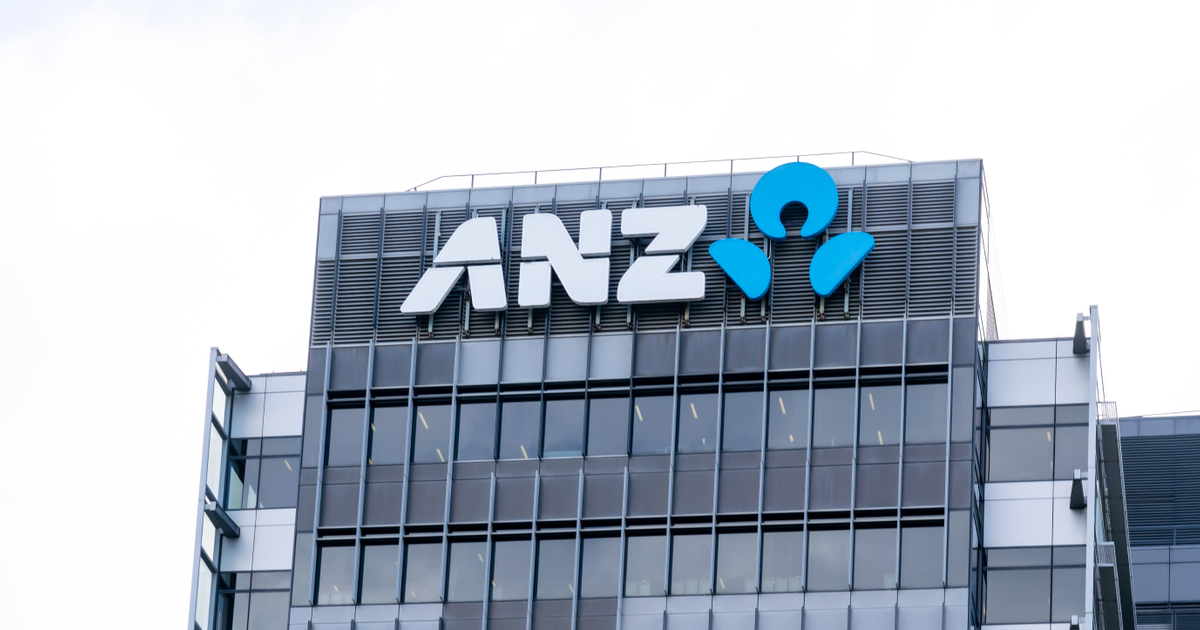How to Create Sales Collateral That Boosts Buyer Confidence
I’d bet the farm that brands have asked you to say nice things about them before. And I’d bet that, on most of those occasions, you didn’t. Now the shoe […]

I’d bet the farm that brands have asked you to say nice things about them before. And I’d bet that, on most of those occasions, you didn’t.
Now the shoe is on the other foot: Your boss has asked you to go out and collect case studies, testimonials and other forms of “social proof.” It almost feels like bad karma.
Because a lot of work goes into collecting social proof — and even more goes into developing the full range of sales collateral, AKA, sales enablement content.
Rest assured, it can be done. Let’s look at what it takes to create sales enablement content that builds buyer confidence.
Disclaimer: While this guide has elements that pertain to B2C companies, it slants toward B2B sales enablement.
Table of Contents
What is Sales Enablement Content?Why is Sales Enablement Content so Important?Is Sales Collateral the Same as ‘Bottom of Funnel’ Content?Examples of Sales Enablement ContentHow to Systematically Collect Social ProofPromoting Your Sales Collateral (Internal & External)Measuring SuccessWrapping UpIt’s any content that helps make a prospect feel comfortable, confident or even excited about spending money with your brand in the stages immediately preceding a purchase decision.
The tried and true restaurant menu is the most prolific sales-enablement content out there. A lot rides on it. A great menu can get a person excited about a bad meal; a lousy one can make your pièce de résistance sound milquetoast.
Like a menu, sales enablement content is all about how you make a prospect think and feel in those key stages immediately leading up to that big sales decision.
Done right, it’s a salesperson’s best friend.
Promises from sales & marketing aren’t enough to justify an investment. Potential buyers need proof that your products and services are worth the money, and that proof needs to come from someone other than you. It needs to come from clients in the form of honest feedback and anecdotes.Some sales cycles require input from many prospect stakeholders. In these situations, you can’t trust the one person you’ve met with to “run the message upstairs” without getting a few things wrong. You need decks, messaging documents and other collateral that make it super easy for them to get buy-in from their decision makers.Sales collateral helps unify your messaging at the point of sale. If the messaging gets wishy washy, your entire sales program can lose its edge.Social proof is literally part of the modern sales funnel (and the modern sales funnel is really more of a flywheel). It’s not over at “sale.” After all, loyal customers are the most affordable customers. They’re also the best promoters. If you’re not collecting social proof from your best customers, you’re literally missing a key step in the inbound marketing lifecycle, and potentially leaving a lot of money on the table.
Not exclusively, no. Sales collateral does its heaviest lifting later in the inbound marketing cycle, but it has value earlier than that. Let me explain.
Nearer to the top of the funnel, a user needs to be convinced to give you their contact info once they’ve found your blog post or landing page. They’re not committing a whole lot here.
Still, some people are more skeptical than others. Great landing page language might convince some folks to reach out and learn more. Others will scour the web for reviews and search your site for case studies before they even think about filling out a form or subscribing to your newsletter.
Case in point, about 8% of our monthly Contact Us form conversions look at a case study before converting. This percentage could be very difference in your industry, potentially much higher.
TL;DR: Sales enablement content such as case studies can and often does play a role in lead generation. But for most B2B businesses, sales collateral’s greatest contribution to marketing comes later in the game, when prospects need every vote of confidence they can get as they sweat over their purchasing decision.
Subscribe to
The Content Marketer
Get weekly insights, advice and opinions about all things digital marketing.
Thanks for subscribing! Keep an eye out for a Welcome email from us shortly. If you don’t see it come through, check your spam folder and mark the email as “not spam.”
Lots of content types can build buyer confidence, but these are the most common:
Social Proof: Case Studies, Testimonials, Reviews & More
Social proof is a type of sales collateral. It is documented feedback from real users of your products or services that says you’re good at doing what you say you do.
“Overwhelmingly positive consensus” is your benchmark. You need glowing testimony and as much of it as possible, to the point that your excellence is irrefutable. Another good rule of thumb to follow: You should ideally have social proof for every single one of your products and services.
Here are the most common types of social proof, plus some advice on when to use which:
1. Case Studies

These narratives document how you helped a client solve a problem. They reference your client by name, and ideally, use direct quotes. The best case studies are highly relatable; your prospects can see their problem being solved in the story. They also include ample hard data, plus visuals of the work, where relevant.
Case studies can also be created in slide formats for use in presentations that your salespeople give at the point of sale — but we’ll get more into that a bit later on.
2. Testimonials
Sometimes you don’t have a quantitative story to tell, because it’s too soon, you don’t have access to the data, or data just doesn’t matter (there’s only so much compelling data one can provide about how awesome their new shoes are). In these cases, the testimonial is your best friend. A testimonial is an outpouring of qualitative feedback from your client. It can take the form of a video, or it could just be a really great quote that you feature on your website.
3. White-Labeled Success Stories

In some cases, all you have is data. But you can’t use the client’s name for any number of reasons. In these situations, a white-labeled success story will have to do.
They’re not ideal, and my conversations with salespeople at Brafton have led me to more or less abandon the format, as they contribute the least value for us. However, they’re better than nothing — especially if you work in an industry where clients are notoriously guarded. And for what it’s worth, we have earned leads on our success stories, a few of which eventually became clients.
4. Client Reviews

Reviews are crucial for all businesses — B2B, B2C, any industry. They’re public, they’re a rich source of quotes that you can feature on your website or in testimonials, and you can even turn the more fleshed-out reviews into case studies.
Just remember: There are a million places where your customers can leave them. It’s your job to decide what the most advantageous reviewing platform is for your brand and point them to that platform. (More on this later on.)
5. Logos

Remember what I said before about making people comfortable? Well, people feel comfortable when they see the logos of brands they recognize on your “clients” page, or in a slide in one of your pitch decks.
“Oh, they work with PerkinElmer? That’s a multi-billion-dollar giant in life sciences. They must be legit!”
Make sure you prominently feature logos of companies you’ve worked with somewhere on your site. Even if they’re smaller brands that your prospects won’t recognize at first glance, they lend the impression that all of these companies trusted you, and that vote of confidence can go a long way.
6. Brand References on the Web

Think of a product or service your brand offers. Now Google “top [your product of service].” Depending on your industry, you’ll probably find directories. But there’s a chance you’ll also find comparison lists on Page 1. Ideally, your brand would appear on those lists. It’s just more proof that you’re the undisputed leader in your space.
As you look at some of the lists ranking for your important key terms, think about what you might be able to offer in exchange for placement on those lists. A guest blog post? Maybe a backlink? A guest appearance on your podcast? It needs to be something that will incentivize the publisher to reference your brand in their content.
Examples of Your Work

If you’re in a line of business where you create things for people (videos, custom machinery, custom jewelry, custom mobile apps, websites, wedding albums, etc.), you need examples that you can showcase.
If you’re anything like us, getting organized will be your greatest challenge. You’ll need an easy way to file away and search for examples of strong work you’ve done for clients. I recommend working directly with sales here. They might already have their own system in place for collecting examples. Your job in the sales enablement arena is to find out where they’re weak in examples and how you can help.
Awards & Accolades

Awards and accolades are seemingly impartial votes of confidence from third parties. Plus, they drive referral traffic and get you in front of new audiences. You can paste the imagery into pitch decks, and feature them on your website.
But a word to the wise: They’re not substitutes for social proof. Clients will get more confidence from a few really strong case studies than from a dozen awards they’ve never heard of.
Slide Decks

My personal favorite. It’s where all the other forms of sales collateral converge. When it comes to impact at the point of sale, they’re second to none, especially for B2B companies with multistep sales cycles.
Great slide decks accomplish many things at once:
Summarize your brand and its values for someone who’s on the verge of spending money with you.Summarize your key offerings and value propositions.Present the aforementioned social proof as slides.Showcase examples of your work.Highlight the awards you’ve won.Provide a packaged pitch that your prospect can share with their team members.It’s where all your many types of sales collateral come together into something that makes a huge difference at the point of sale.
Product Collateral

This is a tricky one. This category can include everything from your product catalog to one-pagers to spec sheets. Think of it as any documentation that matter-of-factly summarizes the characteristics of your products.
How you represent products and services in collateral requires extremely close collaboration with sales and product teams. Pricing is another point of contention. If you know that you’re “expensive,” a product guide with prices listed out will be the last piece of content that a salesperson wants to reach for. They need to sell the value before they can sell the price tag.
Blog Posts and Landing Pages
Yes, blog posts and landing pages typically lean toward the top of the funnel. However, they can also be used in sales. One of our salespeople recently told us that prospects want more proof that we’re fully capable of writing about their subject matter and prescribing strategies that work in their industry.
So, we began doing two things: 1) creating industry-specific landing pages like this one and 2) building benchmark reports that use data to better understand the search landscape in specific industries. One is a landing page, the other a blog series. Both have value at the point of sale.
Not to mention, if your blog posts are highly educational and informative, they can help keep your salespeople attune to the latest industry insights.
There are obviously so many forms of sales collateral, but in the interest of keeping this post a manageable length, we’ll focus on one of the toughest to compile and create: social proof.
“Systematically” is the operative word when it comes to social proof. Going fishing for the occasional review or case study is not enough. Remember that phrase, “overwhelming consensus”? You need a case study, then a review, then a deck that promotes it, and then another, and another and another …
Here’s how to get it:
1. Find Out What Content is Useful for Your Brand
This one applies to all forms of sales collateral. What type of social proof and sales collateral will help your prospects feel more confident about spending money with you? I’ll walk you through a few steps that will help you figure out what sales enablement content can make a difference for your brand:
Meet with sales on a regular basis
Salespeople are on the frontline of your industry and have a sense of what will help them close more deals. They don’t always know what type of content is useful to them, but they always have ideas, and most of those ideas are worth exploring. Figure out what types of content make a difference at the point of sale from their experience.
Scope out your competitors
This is something you should do in any type of content audit. Look specifically at 1) your closest market rivals and 2) industry leaders. While you may not compete directly with the latter, you can get a better sense of the types of social proof other companies are using, and how they’re distributing it.
Look at your branded searches
Nine times out of 10, searching for a brand in Google will pull up some sort of review or rating of that brand. That’s a decent place to start.
 Search results for “Brafton”
Search results for “Brafton” Search results for a sushi place nearby.
Search results for a sushi place nearby.If you want to get really scientific, hop into Google Search Console and figure out your most common branded search terms. Conduct those searches to figure out what sorts of ratings and reviews are being tacked onto your brand’s web presence. This will help guide your priorities.
Look at referral traffic in Google Analytics
Don’t skip this step. Most of what’s being said about your brand happens off your site. Directories you’ve never heard of could be having a huge influence on your company’s reputation.
To see your referral traffic, open Google Analytics. In the left-hand menu select:
Acquisitions > All Traffic > Referrals.
Set your time period to at least a few months to get a good sample size. Look at the list of referrals, paying close attention to the top sources of referral traffic, and just as importantly, to referral conversions:

Three of the top-10 sources of referral traffic to our site over the past few months are business directories. And of those three, one source has more than double the conversion rate, and conversion value, of the others: Clutch.co.
This is no accident. When we first noticed that we were generating conversions through Clutch, we began using it as a way to collect social proof by asking our clients to leave us reviews. Consequently, we started earning more conversions. We also got a bunch of great new reviews with quotes that we could use as we created case studies.
Pro tip: There’s more than one way to get on Page 1 for important keywords. For instance, Clutch is the No. 1 organic search result for “top content marketing agencies.” If a user clicks that result and looks at Clutch’s Leaders’ Matrix, they’ll see Brafton. That’s really good for us. Find out what directories have that type of value in your industry, and own them.
2. Document All Your Social Proof Opportunities
Think of every possible client as a “lead” for social proof.
We’ll go over methods for how to “qualify” and “target” those leads. But first, you need a system for tracking who you’re targeting, and for which type of social proof.
For this purpose, I’m sharing the spreadsheet template that we use to track all of our social proof efforts. Here it is. I’ll walk you through each column:
Permission to contact: Don’t go around contacting clients asking them for things without permission from the account rep. Timing is important.First- and second-choice ask: What type of social proof is the priority for you from a particular client? What’s your second choice if that first option falls through? I’ve prefilled these with drop-down options to choose from, but feel free to edit them to suit your own social proof types. To change the drop-down selections, select the cells you want to edit. Then click into “Data > Data Validation.” Adjust the “list of items” by adding or removing the text you’d like to display in your drop down: Contact (s): Who specifically should you reach out to on the client side?Restrictions: Is there anything in the client’s contract that would prohibit them from participating in social proof, for instance a non-disclosure agreement?Decks/data: Link to any data you might have access to about the work you’ve done for your client. This could be quantitative (ROI decks) or qualitative (glowing feedback from the latest customer satisfaction survey). This can be useful in helping you decide what type of social proof to target.Status: Document your outreach efforts here. Include dates, like so: “sent request for case study interview 12/13.” This will help you stay organized as you juggle different leads.Notes: Anything important worth documenting that doesn’t fit in another column. We often use this to denote the specific product or service that the social proof is about.Thank you gift: Some forms of social proof ask more of the client than others. Make sure you know which requests are the most demanding, and that you send thank you gifts to the clients who acquiesce.
Contact (s): Who specifically should you reach out to on the client side?Restrictions: Is there anything in the client’s contract that would prohibit them from participating in social proof, for instance a non-disclosure agreement?Decks/data: Link to any data you might have access to about the work you’ve done for your client. This could be quantitative (ROI decks) or qualitative (glowing feedback from the latest customer satisfaction survey). This can be useful in helping you decide what type of social proof to target.Status: Document your outreach efforts here. Include dates, like so: “sent request for case study interview 12/13.” This will help you stay organized as you juggle different leads.Notes: Anything important worth documenting that doesn’t fit in another column. We often use this to denote the specific product or service that the social proof is about.Thank you gift: Some forms of social proof ask more of the client than others. Make sure you know which requests are the most demanding, and that you send thank you gifts to the clients who acquiesce.3. Collaborate Closely With Customer Experience Account Reps
This part is the key to getting those aforementioned leads.
Your customer experience folks (project managers, account reps, etc.) know who’s happy, and they can help you target the people who will sing your praises the loudest.
So how do you get your customer experience team involved? Here’s what’s worked for us:
Make social proof a KPI. Customer satisfaction is one thing. Brand advocacy from those customers is an even better thing. Reward customer reps when their clients leave reviews or participate in case studies. This will require direct collaboration and buy-in from your head of customer success. You’re just a marketer, after all. You can’t impose KPIs on another department without support from the head of that department.Meet with them on a regular basis — at least once a quarter, but preferably more. Spend 30 minutes talking through your goals and targets. Explain why you’ve set those goals, and remind them of how they can help you hit them.Send out a monthly survey. Create a simple Google Form that asks each customer rep to include a few examples of clients who are thrilled with your company’s work. At Brafton, we send this out to Project Managers once a month. They’re closest to clients and deliverables, and can provide leads on clients who are most likely to participate in social proof and leave us great reviews.Show endless gratitude. Project managers, account managers, customer success managers — whatever the title, they’re busy doing their jobs, which is making their customers happy. Every extra minute they give you is time out of their day. Make sure that you show your appreciation, even though it also helps them in the end, and even if it is a KPI.4. Use Automation Wisely
Automation is easier for some companies than others. A SaaS provider can send automated emails, or even occasional automated notifications, requesting a user review. You’ll almost certainly get some reviews, especially if you have thousands of users.
But even then, you might find that the most vocal reviewers are the discontented minority. Relying entirely on automation can be risky, in this sense, and you may have to supplement your efforts with manual outreach.
If you offer a more involved service, like consulting, web development or content marketing, it’s the exact opposite: Automation plays a supporting role. Here’s what that might look like:
Automatic customer satisfaction surveys: We send these out at the end of every scope of work. We ask clients to rate their experience with us, and in the final question, we ask if they’d be willing to act as a reference. If they say yes (and rated us positively), our marketing team gets in touch to ask about participating in a case study or leaving a review — especially if they’ve renewed their contract with us. You could easily do something similar with your own marketing automation software.Click-to-send email requests: We’ve gotten more Google Reviews in the past 6 months than in the past 6 years. How? We drafted an email that asks for a Google Review, and programmed it into our email automation system. Consider this scenario. An account manager gets off a weekly client call and that client has nothing but great things to say about the most recent deliverable. The account manager should strike while the iron is hot. And they can, by sending out that Google Review request with the click of a few buttons in Salesforce.5. Think About How You’ll Frame a Social Proof Request to the Customer
Targeting the right clients at the right time (when they’re happiest) is by far the best strategy to get someone to participate in a case study or testimonial.
But it’s worth thinking about who will ask the client and how — does it make more sense to have someone from your marketing team reach out, or to have the customer rep bring it up at the next call? Maybe it’s both. Should you offer some sort of incentive?
Here’s an example of an email that we sent out a while ago requesting a review, after the account manager floated the idea by the client on a call:

And here’s the response:

So in the end, we got a glowing review and a case study out of this. Everything sort of clicked here for the following reasons:
We targeted a loyal client that we know we’ve done great work with over the years.We had buy-in and support from our rep managing the account, who floated the question by the client before I even reached out.We provided an incentive as backup.In our case, the incentive we used is a backlink and a brand mention. It works, because we primarily deal with digital marketing managers who know first-hand how hard it can be to build backlinks. In your case, it might make more sense to offer a temporary discount, or perhaps even provide a free trial of a particular service or product.
But again, the incentive is only a piece of the puzzle. If you’ve gotten buy-in from your customer teams and have done a good job setting up a system to collect, qualify and document social proof leads, most of the clients you target will leave you a review without needing the incentive.
6. Create Your Social Proof
The best practices that go into creating a great case study or video testimonial are numerous enough that they can fill entirely separate articles of their own. In the interest of not taking up too much more of your time, I’ll simply provide a very brief but essential checklist of best practices:
Keep the story simple and to the point; resist the urge to be overly descriptive or “cute” with your writing. The success story is the star here.Highlight hard data; feature it in the title, and at the top of your case study if you can.Structure the story concisely and sensibly: Intro, Challenge, Solution, Outcome.Feature one or two examples of the work you did.Get the customer’s voice in there, and if possible, their image as well.Feature the logo prominently, and include the client’s name in the title.
Now that you have some sales collateral, what should you do with it? Let’s discuss:
Internal Distribution
Sales collateral needs to be promoted internally within your company and externally. And this is one of those rare instances where internal distribution is more important than external distribution.
Because as I said many words ago, sales collateral does its heaviest lifting late in the marketing and sales cycle. It’s mostly there for your salespeople to distribute at the point of sale. And for them to do that, they have to know that the collateral exists and where to find it.
Here are a few methods that have worked for us:
1. First and foremost, turn social proof into slides that salespeople can use at the point of sale. If sales is presenting decks at the point of sale, they should have every case study and testimonial in a slide format. A great pitch deck contains everything within it (meaning no need to look elsewhere for answers) — and that includes the social proof.
2. Inform the entire sales team every time you launch a new case study, new case study slides, a new testimonial, a new slide deck dedicated to a particular product, or any other form of sales enablement content. We have a dedicated Workplace group for our sales and account managers to notify them of new sales collateral. We also make a point to remind sales and account managers where all of this collateral lives several times a quarter. That may seem redundant, but new hires and busy schedules necessitate that redundancy.
3. Create and distribute a centralized location for great examples of client work. It’s very possible that sales has a system in place for gathering examples of your company’s great work, as is the case with us. The only way you’ll know is to talk to them. If there is something they need help with, make sure that you have a central location where you can update any new examples and notify sales once you’ve done so. For instance, we create dozens of new client videos every month. Sales doesn’t have the time to go through all those videos, pick out the best ones and upload them to our YouTube account. So instead, our lead video editor flags the best videos he comes across each month. Our marketing team then uploads those videos, and notifies sales once they’re live on YouTube.
External Distribution
Obviously, you want to get as many eyes as possible on your case studies, testimonials, reviews and other public-facing sales collateral and social proof. There are a few ways to do this:
1. Share case studies and testimonials on all of your usual distribution channels (email, social media, etc.). For video testimonials, also upload them to YouTube. Tag your client on LinkedIn, Facebook and Twitter when you share your case study or testimonial.
2. Feature case studies, testimonials and great reviews on relevant landing pages. We have panels like the one below on most of our product landing pages:

3. Make sure your social proof is super easy to find on your site. Feature it in your main navigation under a non-ambiguous header.

4. Put it in your email signature: Putting a rating with links to dozens of glowing reviews about your company in an email signature is one of the easiest ways to get your social proof in front of every lead and prospect that your sales team talks to. Here’s an example the signature we recently came up with:

It’s notoriously difficult to document the precise impact your content has on sales. This is especially true for any slides that you create at the point of sale. In theory, you might be tempted to look at close rates, time to close and other sales KPIs. And who knows, depending on your market, there may be a direct correlation between your sales collateral efforts and those KPIs.
But for most industries, that’s going to be a difficult correlation to establish. There are so many mitigating factors when it comes to sales numbers, and we haven’t yet figured out exactly how to isolate hard data that unequivocally correlates to sales enablement’s impact on the most crucial KPIs.
However, there are a few key metrics that you should absolutely pay attention to as you measure the success of your sales collateral. They include:
Number of reference requests from sales: One of the things we immediately noticed as we bulked up on sales collateral is that we got far fewer reference requests. When sales has all the proof — rave reviews, case studies and testimonials — right there in front of the prospect, there’s less urgency for those prospects to go asking questions that you’ve already answered in your sales enablement content.
Your goal conversion path: In Google Analytics, click on conversions in the left-hand menu. Go to “Goals,” and then select “Reverse Goal Paths.” Once there, select one of your macro conversion goals (e.g. your “contact us” or “schedule a demo” type goals that indicate potential intent to buy).

From this view, you’ll be able to see the page where the user converted plus the pages the user looked at leading up to those conversions. Ideally, as you add more social proof to your site, you’ll also see its impact on lead generation:

Referral traffic conversions: Remember we talked about referral traffic and conversions as being a good way to see where you may already be getting reviewed and discovered on the web? As you gather more reviews on the platforms that matter, pay attention to the impact those wins have on referral traffic and on conversions. Again, it doesn’t tell you much about sales, but it’s nice to see that work contributing to new leads.
Feedback from sales: There are a few ways to get feedback on your sales enablement efforts from sales. You could seek it anonymously in a survey if you’re worried that they might not be honest with you. Or you could just ask them on your regular check-in call (which you absolutely should have). The goal here is to get a sense of whether your work is helping, how it’s helping and what else you might be able to contribute.
There is A LOT of data that we’ve yet to mine to really measure the impact of our sales enablement efforts. But we will, and we’ll report back with advice on how to do this once we have.
I know what you’re thinking: This sounds like a full-time job.
And I’ll level with you: It can feel that way in the early goings. The hardest part is laying those foundational elements — buy-in from customer teams, your social proof “lead-gen” efforts, an organized system for tracking social proof efforts, setting up the automated feedback and review-request mechanisms, getting a monthly or quarterly meeting on the books with sales.
But it all becomes a part of your standard operating procedure over time. It starts to happen without you really thinking about it. Like muscle memory.
Plus, you have a head start because you read this behemoth of a blog post.
So push through these early goings, and trust me when I say that it only gets easier from here.

 Konoly
Konoly 











.jpg)


















